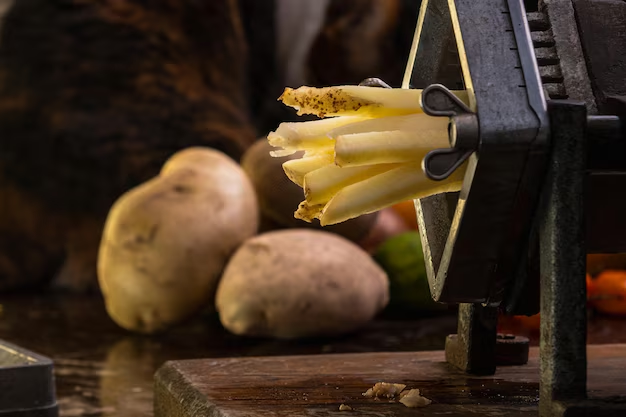Should You Store Potatoes in the Refrigerator? Everything You Need to Know
If you’ve ever wondered whether storing potatoes in the refrigerator is a good idea, you’re not alone. The debate over the best way to store potatoes has been simmering for years, with questions about shelf life, nutritional content, and overall food safety being top of mind. In this comprehensive guide, we’ll explore the ins and outs of potato storage to help you extend their shelf life, avoid spoilage, and keep your kitchen running smoothly.
🥔 Understanding the Nature of Potatoes
Potatoes are a staple in many households due to their versatility, affordability, and nutritional benefits. They are rich in carbohydrates, vitamin C, potassium, and B vitamins. However, because they are living organisms, potatoes continue to respire and undergo biochemical changes even after being harvested. This makes them susceptible to spoilage if not stored correctly.
The Basics of Potato Physiology
- Starch Composition: Potatoes are primarily composed of starches, which give them their hearty texture and contribute to their long cooking times.
- Moisture Content: Potatoes have a high moisture content, making them susceptible to sprouting and decay.
- Temperature Sensitivity: As a cool-season crop, potatoes prefer to be stored in cool, dark places to minimize stress and degradation.
🚚 Optimal Storage Conditions for Potatoes
One of the most common questions is whether potatoes can be adequately stored in the refrigerator. While it might seem like a logical choice, the answer isn’t quite straightforward. Let's delve into the most suitable conditions for potato storage.
Cool and Dark Are Key
For optimal storage, potatoes should be kept in a cool, dark environment. This mimics the conditions of their natural growing habitat and helps maintain their quality.
- Temperature: Aim for a storage temperature between 45–55°F (7–13°C). This range inhibits sprouting and spoilage.
- Humidity: Moderate humidity levels prevent the potatoes from drying out.
- Light Exposure: Keep potatoes away from light to prevent greening and the production of solanine, a toxic compound.
Using a Refrigerator: Pros and Cons
Pros
- Refrigeration can significantly slow down sprouting and decay by lowering the temperature well below the typical room settings.
Cons
- Starch Conversion: Low temperatures convert potato starches into sugars, altering their flavor and making them taste sweeter. This can lead to unpleasant browning when cooked.
- Texture Changes: Refrigerated potatoes may develop a gritty texture, affecting how they cook and their appeal.
Overall, refrigeration is generally not recommended for long-term storage due to these effects.
🗒️ Best Practices for Potato Storage
To maintain the quality and extend the life of your potatoes, consider the following storage tips:
- Store in a Mesh Bag or Basket: Allow for air circulation, which helps prevent moisture buildup and mold.
- Avoid Washing Before Storage: Moisture can accelerate spoilage, so wash potatoes just before use.
- Check Regularly: Routinely inspect potatoes for signs of spoilage or sprouting and remove affected ones promptly.
Preventing Common Storage Issues
Sprouting
- Cause: Exposure to light and warmth.
- Solution: Store in a cooler, darker space. Use sprout-inhibiting products if necessary.
Greening
- Cause: Light exposure leads to chlorophyll and solanine production.
- Solution: Ensure they’re kept in a dark environment.
Softening and Wrinkling
- Cause: Loss of moisture through improper storage.
- Solution: Maintain moderate humidity and provide air circulation.
🍽️ Impact of Storage on Nutritional Content
While storage conditions can affect the texture and flavor of potatoes, they can also impact their nutritional value. Refrigeration-induced sweetening may lead to caramelization when cooked, altering their caloric content. However, these changes are not typically drastic enough to negate the health benefits of potatoes.
Maintaining Nutritional Integrity
- Eat Fresh: Within a few weeks of purchase for optimal nutritional benefits.
- Cooking Methods: Baking, steaming, or boiling can help preserve most of the nutrients while minimizing unwanted changes from refrigeration.
🧺 Alternatives to Refrigeration
If you don’t have an ideal storage setup, there are alternative methods worth considering:
- Root Cellars: A traditional method that uses the natural coolness and humidity underground.
- Basements and Pantries: These can mimic root cellar conditions if properly managed.
📝 Summary of Key Takeaways
Here’s a handy quick-reference guide for preserving your potatoes:
Potato Storage Cheat Sheet 📝
- 🌡️ Temperature: 45–55°F (7–13°C)
- 🌫️ Humidity: Moderate
- 🚫 Light: Keep away to prevent greening
- 🍽️ Wash: Just before use, not before storage
- 🖐️ Check: Routinely inspect for spoilage
By adhering to these guidelines, you'll keep your potatoes fresher for longer, which not only reduces food waste but also saves you money in the long run. Remember, the ultimate goal is to maintain their flavor, texture, and nutritional quality, so when in doubt, opt for the storage methods that closely mimic the natural growing conditions of potatoes.
Understanding how to store potatoes effectively is an essential part of food management. Whether you're a culinary enthusiast or someone just trying to keep your grocery bills down, knowing where to store potatoes can improve both the texture and taste of your dishes, all while helping to minimize waste. Choose the storage solutions that work best for you, and enjoy the rich flavors these versatile tubers can offer!
